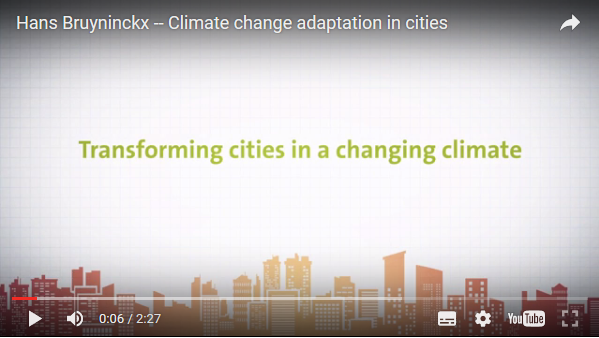The EEA report ‘Urban adaptation to climate change in Europe 2016 – transforming cities in a changing climate’ provides an in-depth overview of actions that urban planners and policymakers can take to help lessen the impact of climate change. The report outlines the changes and socio-economic challenges cities face due to climate change, and the possible consequences. It analyses the approaches cities can take to adaptation and explains that short-term coping or incremental adaptation measures alone will not be enough to mitigate the threats.
The report recommends that the best way to meet these challenges is to take a wider systemic approach that addresses the root causes of vulnerability to climate change. This includes better urban planning, with more green areas that can retain excess rainwater or cool built-up city cores in the summer, or by preventing the construction of houses in flood-prone areas. This approach can transform cities into much more attractive, climate-resilient and sustainable places.
European cities are increasingly susceptible to the negative aspects of climate change, which are expected to increase in frequency and intensity with extreme events such as heatwaves, flooding, water scarcity and droughts. At the same time, socio-economic and demographic developments can make cities more vulnerable. These will have profound impacts on a wide range of city functions, infrastructure and services such as energy, transport, and water and will affect the quality of life.
According to the report, 100 cities, including Copenhagen, Rotterdam, Barcelona, Bologna and Bratislava, have already started to look at their vulnerability to climate change. They have developed plans and strategies and started implementing them. Governments and organisations at EU, national and regional levels have also developed political and legislative frameworks for cities to implement adaptation measures – among them the EU Adaptation Strategy and the Covenant of Mayors for Climate and Energy initiative. However, more needs to be done, as many more cities are not yet planning for climate change, the report says.

Background
The report targets local, regional, national and European governments and organisations as well as experts and researchers concerned with urban adaptation. It complements other Agency products such as the EEA report 2/2012: Urban adaptation to Climate change in Europe – Challenges and Opportunities and the interactive map book on urban vulnerability to climate change.
The EEA’s task is to provide knowledge for this process at different levels. The Agency provides assessment reports and maintains the European Climate Adaptation Platform Climate-ADAPT and facilitates information exchange among stakeholders, such as co-organising the annual Open European Day Resilient Cities.

Document Actions
Share with others